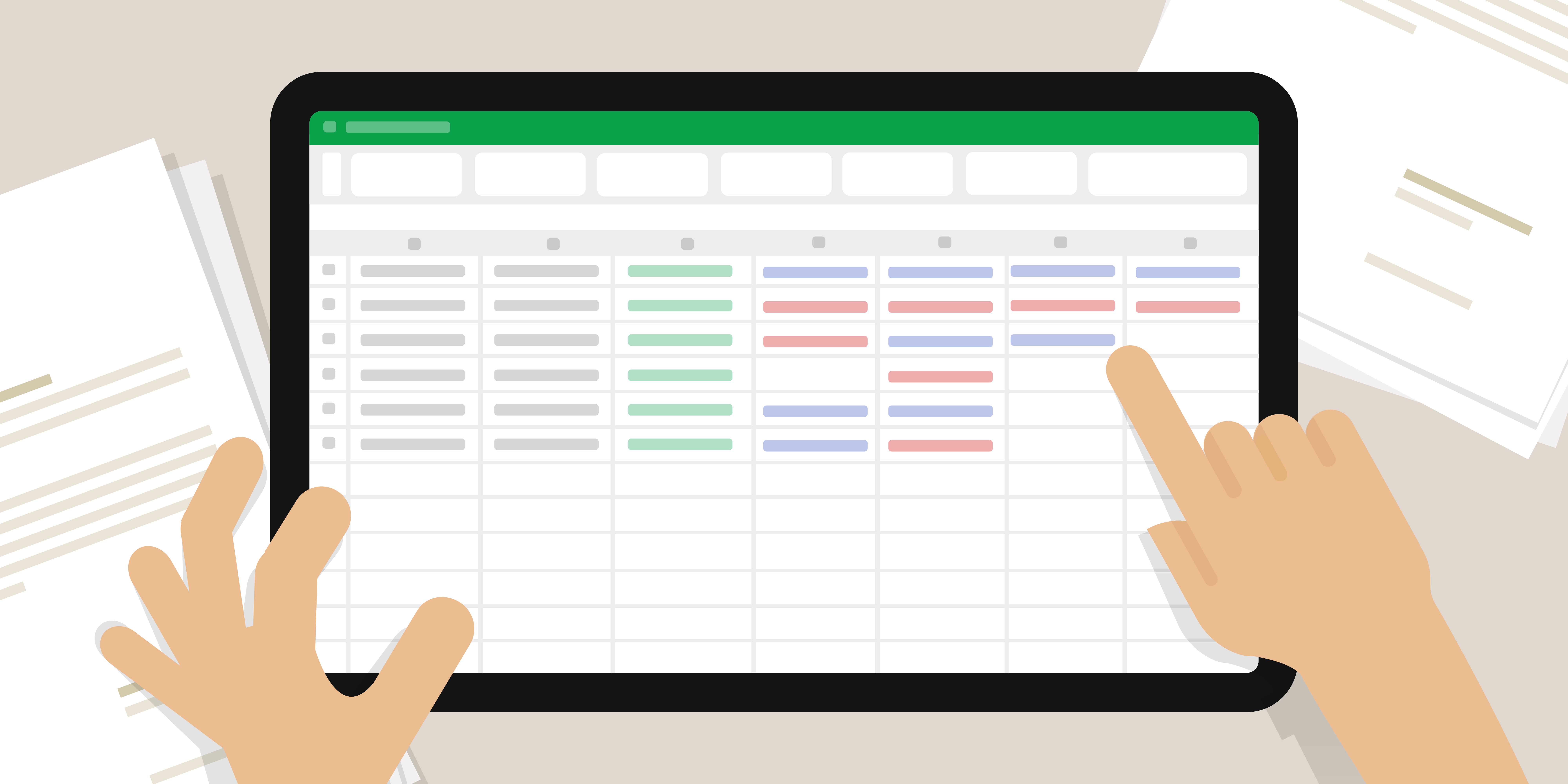
In many organizations, managing digital identities and access control is still done manually using spreadsheets. At first glance, this may seem like a cost-effective solution—after all, spreadsheets are widely available, easy to use, and familiar to employees.
However, the reality is that managing access through spreadsheets comes with significant hidden costs, security risks, and inefficiencies that can far exceed the cost of implementing a dedicated Identity and Access Management (IAM) solution.
This blog post explores the true cost of spreadsheet-based identity management, why it’s a financial and operational risk, and how an IAM solution can add an extra layer of security, efficiency, and long-term cost savings.
The Hidden Costs of Spreadsheet-Based Access Management
1. Manual Errors Lead to Compliance Risks
Spreadsheets require constant manual updates, increasing the risk of errors that can lead to compliance violations. Financial institutions, healthcare organizations, and enterprises operating under strict regulations like SOX, HIPAA, or GDPR must ensure proper access controls, documentation, and audit trails.
- Risk: One incorrect entry can lead to unauthorized access or a compliance failure.
- Cost: Fines for non-compliance can range from thousands to millions of dollars, plus reputational damage.
Real-World Example
In 2021, the Office of the Comptroller of the Currency (OCC) assessed a $1 million civil money penalty against CommunityBank of Texas, N.A., for violations of the Bank Secrecy Act. The bank's inadequate tracking and management of access controls contributed to these violations. occ.gov
Why IAM is Better
Identity and Access Management (IAM) solutions provide automated access controls, audit logging, and policy enforcement to ensure compliance. Automated workflows reduce human error, making compliance easier and more reliable.
2. Time-Consuming and Inefficient
Manually managing user access approvals, provisioning, deprovisioning, and access reviews through spreadsheets is incredibly time-consuming.
- IT teams spend hours or even days updating access lists, verifying permissions, and tracking changes.
- Managers and auditors must cross-check multiple spreadsheets to validate compliance risks.
- Cost: The time spent on access management could be better used for higher-value IT and security initiatives, making manual processes inefficient and costly.
Real-World Example
A U.S.-based healthcare provider experienced significant inefficiencies by using spreadsheets for access reviews, spending over 200 hours per quarter on manual verification processes. After transitioning to an IAM solution, they reduced this time to just 10 hours per quarter, thereby conserving valuable IT resources and enhancing compliance.
Why IAM is Better
Identity & Access Management and Identity Governance solutions automate access reviews and approvals, drastically reducing the time spent on manual processes. With real-time access tracking and role-based access control provisioning, IAM eliminates inefficiencies and speeds up user onboarding and offboarding.
3. Manual Access Requests Lead to Bottlenecks
One of the biggest inefficiencies with spreadsheet-based access management is handling access requests. When employees need system access, the process often involves multiple emails, phone calls, and back-and-forth conversations to verify whether they should have access. This creates significant delays, frustration, and lost productivity.
- Risk: Without a structured approval workflow, incorrect access approvals may occur, leading to security risks and compliance failures.
- Cost: Delays in access approvals slow down business operations, impacting employee efficiency and IT workload.
Real-World Example
A financial services firm in the United States relied on spreadsheets and email approvals for access requests. On average, approvals took 3-5 business days, delaying employees' ability to perform their jobs, due to levels of access they are waiting for. After deploying an IAM solution with built-in approval workflows, approvals were streamlined to under 30 minutes, improving efficiency and reducing IT overhead.
Why IAM is Better
Identity & Access Management solutions include pre-configured approval workflows that automatically route access requests to the right stakeholders. These workflows enforce security policies, ensuring only authorized users receive access to resources, while rejecting requests that don’t meet approval criteria. This eliminates delays, improves productivity, and increases the security posture of the organization.
4. Security Risks and Data Breaches
Spreadsheets are not secure. They can be:
- Easily shared via email, USB, or cloud storage without encryption.
- Prone to unauthorized modifications.
- Lacking Role-Based Access Control (RBAC) or multi-factor authentication (MFA).
Without proper security controls, organizations are vulnerable to data breaches, insider threats, and external cyberattacks.
- Cost: Data breaches cost businesses an average of $4.45 million per incident.
Real-World Example
In 2021, Flagstar Bank experienced a cyberattack where a hacker gained access to its Citrix environment, stealing personally identifiable information of 1.5 million customers. The bank's delayed detection and response highlighted the absence of real-time monitoring and reporting mechanisms. bankingdive.com
Why IAM is Better
Identity management systems implement RBAC, MFA, and encryption to protect sensitive user information. Real-time access monitoring and anomaly detection ensure organizations can quickly detect and mitigate security threats before they escalate.
5. Lack of Real-Time Monitoring & Reporting
Spreadsheets do not provide real-time access tracking, alerts, or automated reports for audits.
- Risk: Delays in identifying unauthorized access or orphaned accounts.
- Cost: Increased workload for IT and security teams, plus heightened risk exposure due to lack of visibility.
Real-World Example
In 2019, First American Financial Corporation reportedly leaked 885 million users' sensitive records due to a website configuration error. The lack of real-time monitoring and reporting mechanisms delayed the detection of this massive data exposure. upguard.com
Why IAM is Better
Identity access management solutions provide real-time monitoring, automated reporting, and comprehensive audit logs, ensuring that access control policies are consistently enforced. Organizations can instantly detect policy violations, deprovision outdated accounts, and meet audit requirements effortlessly.
6. No Support for the Principle of Least Privilege
Spreadsheets make it nearly impossible to enforce the Principle of Least Privilege—a critical security concept that ensures users are granted only the minimum level of access privileges necessary to perform their jobs. Without structured role definitions or automated access controls, spreadsheet-based management often results in excessive permissions that go unchecked for months or even years.
- Risk: Over-provisioned access creates significant security vulnerabilities and increases the potential for insider threats, accidental data exposure, and non-compliance with regulatory standards.
- Cost: Excessive permissions can lead to costly breaches and audit failures—especially in industries like finance and healthcare where least privilege is a compliance requirement.
Real-World Example
A global insurance firm using spreadsheets to track privileged accounts failed an internal audit due to widespread over-permissioning. Several former contractors still had access to sensitive systems months after their contracts ended. The organization was forced to initiate a full access review, costing weeks of manpower and exposing gaps in their access control policies.
Why IAM is Better
Identity Management solutions are designed to enforce least privilege through role-based access control (RBAC), policy-based provisioning, and automated access reviews. Access is granted based on job roles, and elevated permissions require formal approval with expiration timelines. This not only reduces the attack surface but also ensures compliance with regulatory standards like SOX, HIPAA, and GDPR, ultimately providing more secure access and user access rights, especially to those privileged accounts.
The Cost Comparison:
Spreadsheets vs. an IAM Solution
Let’s break down the financial impact of using spreadsheets versus investing in an Identity and Access Management (IAM) system.
| Factor | Spreadsheet | IAM Solution |
|---|---|---|
| Initial Cost | $0 - $500 (Excel, Google Sheets) | $10,000 - $50,000 (varies by vendor, ROI in long term) |
| Ongoing Maintenance | $50,000+ annually (manual labor, frequent updates) | $5,000 - $20,000 annually (automated, reduced operational costs) |
| Compliance Risk | High (prone to errors, no audit trails) | Low (automated tracking, built-in compliance tools) |
| Time Spent on Access Reviews | 200+ hours per quarter | 10 hours per quarter with automation |
| Security Risk | High (no encryption, vulnerable to leaks) | Low (RBAC, MFA, continuous monitoring) |
| Employee Productivity | Delays in access approvals cost $100,000+ annually | Instant provisioning saves $50,000+ in lost productivity |
| Data Breach Cost | Potentially $4.45 million per breach | Significant reduction in breach risks (potential savings of millions) |
Conclusion: IAM is the Smarter Investment
While spreadsheets might seem like a cost-effective way to manage digital identities, user access, and privileged accounts, the hidden costs—manual errors, inefficiencies, security risks, and regulatory requirements and compliance failures—quickly add up. Organizations that continue relying on spreadsheets are exposing themselves to unnecessary financial, operational, and security risks.
By investing in an Identity and Access Management (IAM) or Identity Governance solution like IDHub, companies can automate access management, strengthen security, ensure compliance, and improve overall efficiency—leading to significant cost savings in the long run, secure identity, and access policies.
IDHub offers advanced capabilities such as automated access requests, approval workflows, least privilege access enforcement, and real-time compliance tracking, making it a powerful solution for organizations looking to enhance security while reducing costs.
💡 Don’t let outdated spreadsheets hold your business back. Explore Identity access management solutions like IDHub today and see how much time and money you can save!
